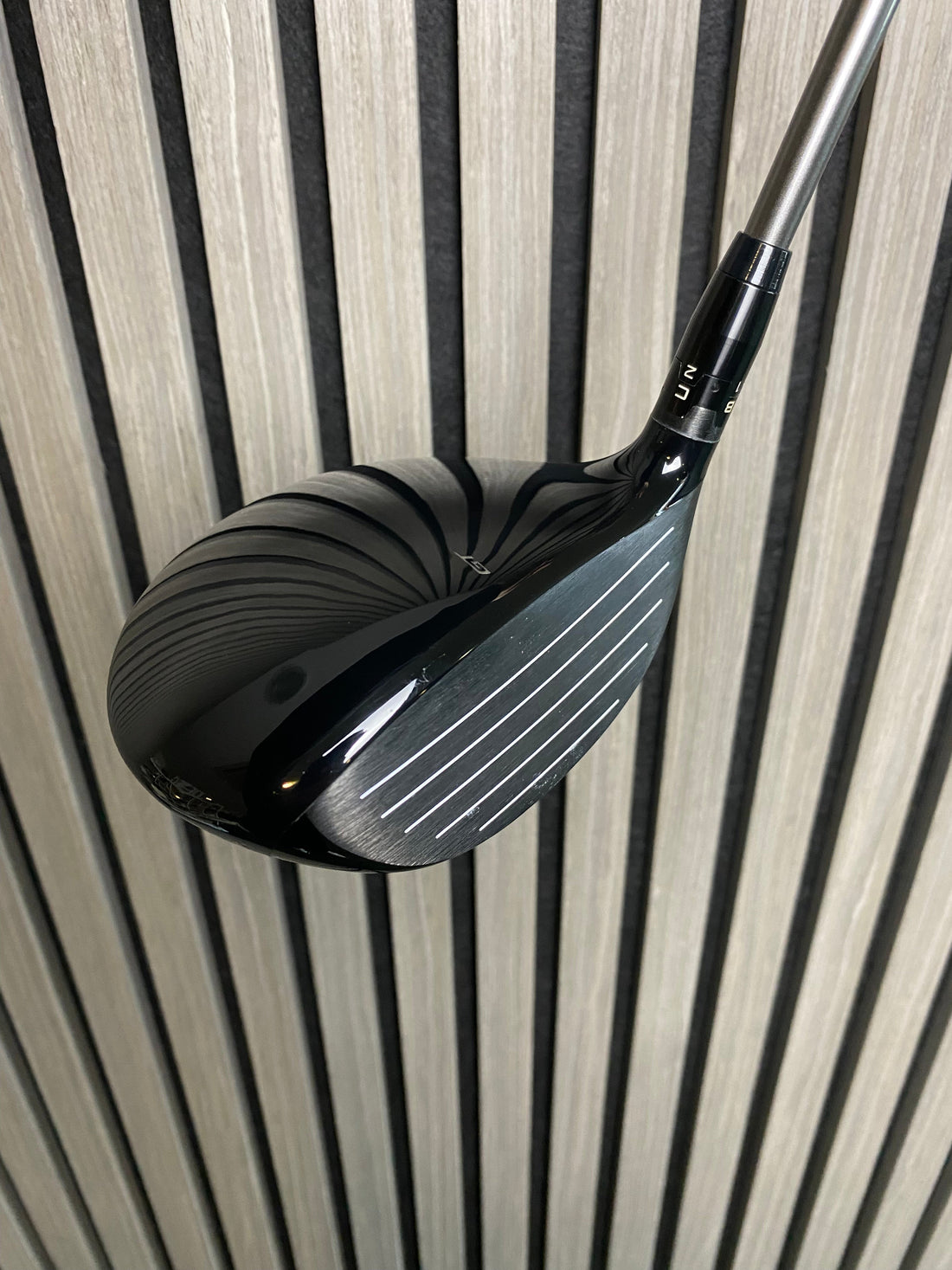Titleist GT280 Mini Driver: A Specialist’s Tool That Delivers on Promise
The mini driver category has evolved significantly over the past few years, transforming from a niche curiosity into a legitimate weapon for golfers seeking more control and consistency off the tee. Titleist’s entry into this space with the GT280 Mini Driver represents a thoughtful approach to this hybrid category, delivering a club that prioritises precision and confidence over raw distance.
First Impressions: Classic Titleist Aesthetics
I’ve recently been testing the Titleist GT280 Mini Driver, and I was struck immediately by how sleek and classic it looks. It’s one of those clubs that gives you confidence at address just from the way it presents itself down by the ball. The head sits beautifully with a confidence inspiring profile that’s neither too bulky nor too compact. Titleist has maintained their signature understated elegance with a clean, professional appearance that fits seamlessly into any serious golfer’s bag.
The finish is immaculate, featuring Titleist’s characteristic attention to detail. The crown design incorporates subtle visual cues that help with alignment without being distracting, while the overall aesthetic screams quality and craftsmanship. This is clearly a club designed for golfers who appreciate both form and function.
Performance Profile: A Specialist Tool
I found it works best as a second tee club rather than a do it all option. This distinction is crucial to understanding where the GT280 fits in your bag strategy. Compared to a 3 wood, it has a larger club face, which gives a bit more forgiveness, making it easier to hit off the tee. The increased face area provides a more generous sweet spot, which translates to better results on slight mishits, a valuable asset when you’re standing on a tight tee shot.
However, the club’s design philosophy becomes apparent in different lies. Because it has a deeper face, I found it less ideal for hitting off the fairway, especially for amateur golfers who may not always strike it cleanly. The deeper face, while beneficial for tee shots, requires more precision when hitting off the deck. This isn’t necessarily a flaw, it’s a design choice that emphasises the club’s primary purpose.
I think of it more as a specialist tee club, perfect for tight holes or when I want to swing freely without worrying too much about mishits. On courses with narrow fairways, forced carries, or strategic positioning requirements, the GT280 shines. It offers that sweet spot between driver distance and fairway wood control, giving you roughly 85-90% of your driver distance with significantly more accuracy and consistency.
Technology and Adjustability
The GT280 also comes with all the modern Titleist tech, including an adjustable hosel, so you can tweak loft and lie to suit your swing. The SureFit hosel system offers 16 different loft and lie combinations, allowing for fine tuning that can optimise launch conditions for individual swing characteristics. This adjustability is particularly valuable in a mini driver, where finding the right launch angle and spin rate can make the difference between a good club and a great one.
The head incorporates Titleist’s latest face technology, designed to maintain ball speeds across the face while providing the feel and feedback that better players demand. The construction features a high-strength steel face that’s precision-milled for consistency, paired with a lightweight crown that helps optimise the centre of gravity for ideal launch conditions.
Feel and Feedback
It’s lightweight but solid, and it feels well-balanced in the hands. The overall weight distribution creates a club that feels substantial without being unwieldy. At roughly 200 grams fin head weight, it sits perfectly between a fairway wood and driver, providing enough mass for stability while maintaining the swing speed benefits of a lighter club.
I enjoyed the sound and feel at impact, it has that sharp, clean feedback you expect from a premium Titleist head. The sound is crisp and authoritative, providing immediate feedback about the quality of contact. Unlike some mini drivers that can feel hollow or metallic, the GT280 produces a satisfying “crack” that instills confidence and provides clear information about strike quality.
The feedback through the hands is equally impressive. You can immediately feel whether you’ve caught it on the sweet spot, slightly toward the heel or toe, or if you’ve hit it thin or fat. This level of feedback is invaluable for better players who want to understand their misses and make adjustments.
Ideal Player Profile
The GT280 isn’t for everyone, and Titleist doesn’t pretend it is. This is a club designed for golfers who understand course management and value precision over maximum distance. It’s ideal for players who struggle with driver consistency, those who play courses with premium on accuracy, or golfers who want a reliable weapon for specific situations.
Single digit handicappers will appreciate the workability and precision, while higher handicap players who fight a slice or hook with their driver may find the GT280’s shorter shaft and more forgiving head help them find more fairways. It’s also excellent for senior golfers or those with slower swing speeds who want to maximise their distance while maintaining control.
The Verdict
For me, it’s a really solid option if you’re looking for a reliable second tee club, or if you sometimes struggle with your driver. The GT280 fills a specific role exceptionally well. It’s not trying to be everything to everyone, it’s a specialist tool designed for specific situations and player types.
It’s not a true all rounder off the tee and turf, but it’s stylish, forgiving, and very playable in the right situations. If you understand its strengths and limitations, the Titleist GT280 Mini Driver can become an invaluable addition to your bag, providing the confidence and consistency that leads to lower scores and more enjoyable rounds.
At its price point, you’re paying for Titleist’s attention to detail, build quality, and the peace of mind that comes with carrying a club designed specifically for your needs rather than trying to force a traditional fairway wood or driver into situations where they don’t excel.
Joe Killoran, Editor, 8 Hcp

